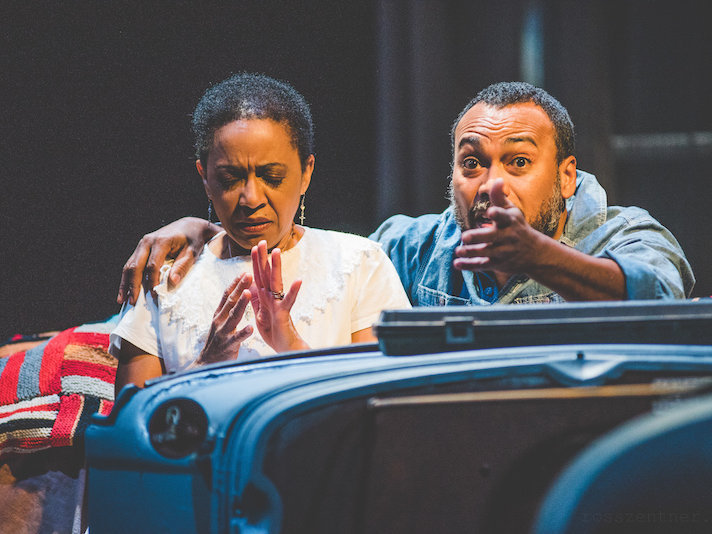The new year is a time for thanks for the past and a time for hopes and wishes for the brand new time in our life and nowhere is it more profound than in the world of the performing arts.
The performing arts, music, theater and dance, are filled with reimagination, new and untested ideas and welcoming risk into their DNA. I spend a lot of my professional life with the performing arts and it is an ultimately satisfying and joyful life. And there are things that I wish for, things I hope will happen or continue to happen in 2017.
The United Performing Arts Fund
UPAF is, perhaps, the most successful community performing arts fund raising organization in the country. In the last 50 years UPAF has raised over $300 million for local arts companies an achievement worthy of universal applause.
But there are things that UPAF could do, I think, that would help foster a more diverse and challenging performing arts community. While nobody talks about it for the record, there are rumblings about the allocation process for the millions that UPAF raises annually.
Each year UPAF announces the awards to the cornerstone groups, member groups and a number of smaller companies called affiliates. The support from UPAF is vital to all of these organizations.
But the allocation process is a mystery. There is a formula, designed by Northwestern Mutual, but UPAF keeps the formula a secret. It’s fine that they’ve got a formula but the overwhelming bulk of the money goes to the cornerstone and member groups. The small affiliate groups are awarded a comparative pittance. In addition, the application process for grants is a complex one that discourages application rather than encouraging it.
It would be helpful to have some method of identifying small groups that would benefit from a grant and seek them out, rather than place the burden on them to apply. I can easily think of six small companies, all doing interesting and chancy work, who should get some level of funding - Bronzeville Arts Ensemble, Alchemist Theatre, All In Productions, Theatre Red , Milwaukee Opera Theatre and Off the Wall Theatre.
Part of the problem, I believe, is the formula and the fact that the board of UPAF has kind of an elitist makeup, filled as it is with the economically advantaged. In addition, there is no performing arts representation on the board. That’s problematic.
Vibrant community
In this city we take great pride in the development of our downtown and the appearance of Milwaukee in those "best kept secret" lists that appear in magazines and newspapers.
All of them normally cite our taverns and restaurants and our performing arts communities as major attractions.
There is also no doubt that Milwaukee is a city that has an abundant share of problems, racial and economic inequities, dispirited communities and segregated housing patterns. Governments at all levels struggle with solutions to some of those problems.
I am a firm believer that "the artist shall lead them" and that a vibrant and diverse community of artists can help pave the way toward a more balanced and harmonious society.
What that means, of course, is that I firmly believe that government ought to contribute significant amounts of money to support performing arts companies. The state, county and city all contribute some now but I’d love to see some leader say that public support of performing arts groups is critical to the health of our city and then put his money where his mouth is.
David Cecsarini
In almost a quarter century of production at his Next Act Theatre, Cecsarini has built an unmatched reputation for highest-level performance of plays that explore the human and societal condition.
There is no other company in town as committed to theater that challenges the mind as it often tugs at the heart. He has a unique gift for finding plays that need to be seen, discussed and thought about.
I wish that Next Act would have a full house every single night as Milwaukee (especially the millennials among us) discover the immense satisfaction and powerful reaction from his productions.
Skylight identity
Skylight Music Theatre seems to be in the middle of a slight identity crisis and I hope that the new year brings a resolution to their mission and their financial difficulties.
The board is searching for a new artistic director to replace Viswa Subbaraman who gave the company a decided edge that many long-time subscribers were uncomfortable with. He experimented with some productions and not everyone was a fan.
So the board is in the midst of a struggle to figure out what kind of programming they want while also trying to deal with the increasing financial issues. Skylight owns the Broadway Theatre Center building and the bulk of the income from the building comes from the company itself.
It’s not a sustainable model and there is rampant speculation that Skylight is going to sell the office building and retain ownership of the Cabot Theatre. Moving to more economical office and rehearsal space could provide some economic room for the company, although it would mean that both Renaissance Theaterworks and Milwaukee chamber Theatre would have to struggle to find new office and performance spaces.
Hopefully the new year will bring workable and satisfactory solutions to everyone involved in this burgeoning quagmire.
New homes
Both the Milwaukee Symphony and the Milwaukee Ballet are looking for new homes, even though the ballet won’t admit that it is purchasing land from the Italian Community Center for new office, rehearsal and, perhaps, school space.
The symphony has its sights set on a multi-million dollar renovation of the storied Grand Theatre on Wisconsin Avenue, and has raised about half of the estimated $120 million cost. The move will have a spillover effect, both positive and negative.
The Marcus Center for the Performing Arts will lose a tenant that used more dates than any other tenant and finding performances to fill those dates will be a challenge.
In addition, the symphony being located in Westown may prove to be a challenge since there is ample evidence that suburban patrons have pretty much abandoned Wisconsin Avenue locations in recent years. The death of Grand Avenue Mall was due, in large measure, to the disappearance of suburban shoppers who just wanted to avoid Downtown Milwaukee.
The distance between the Marcus Center and the Grand Theatre may be only several hundred yards geographically, but emotionally and by reputation the two are separated by a vast gulf.
I hope new facilities sail on for both companies in 2017.
With a history in Milwaukee stretching back decades, Dave tries to bring a unique perspective to his writing, whether it's sports, politics, theater or any other issue.
He's seen Milwaukee grow, suffer pangs of growth, strive for success and has been involved in many efforts to both shape and re-shape the city. He's a happy man, now that he's quit playing golf, and enjoys music, his children and grandchildren and the myriad of sports in this state. He loves great food and hates bullies and people who think they are smarter than everyone else.
This whole Internet thing continues to baffle him, but he's willing to play the game as long as OnMilwaukee.com keeps lending him a helping hand. He is constantly amazed that just a few dedicated people can provide so much news and information to a hungry public.
Despite some opinions to the contrary, Dave likes most stuff. But he is a skeptic who constantly wonders about the world around him. So many questions, so few answers.






